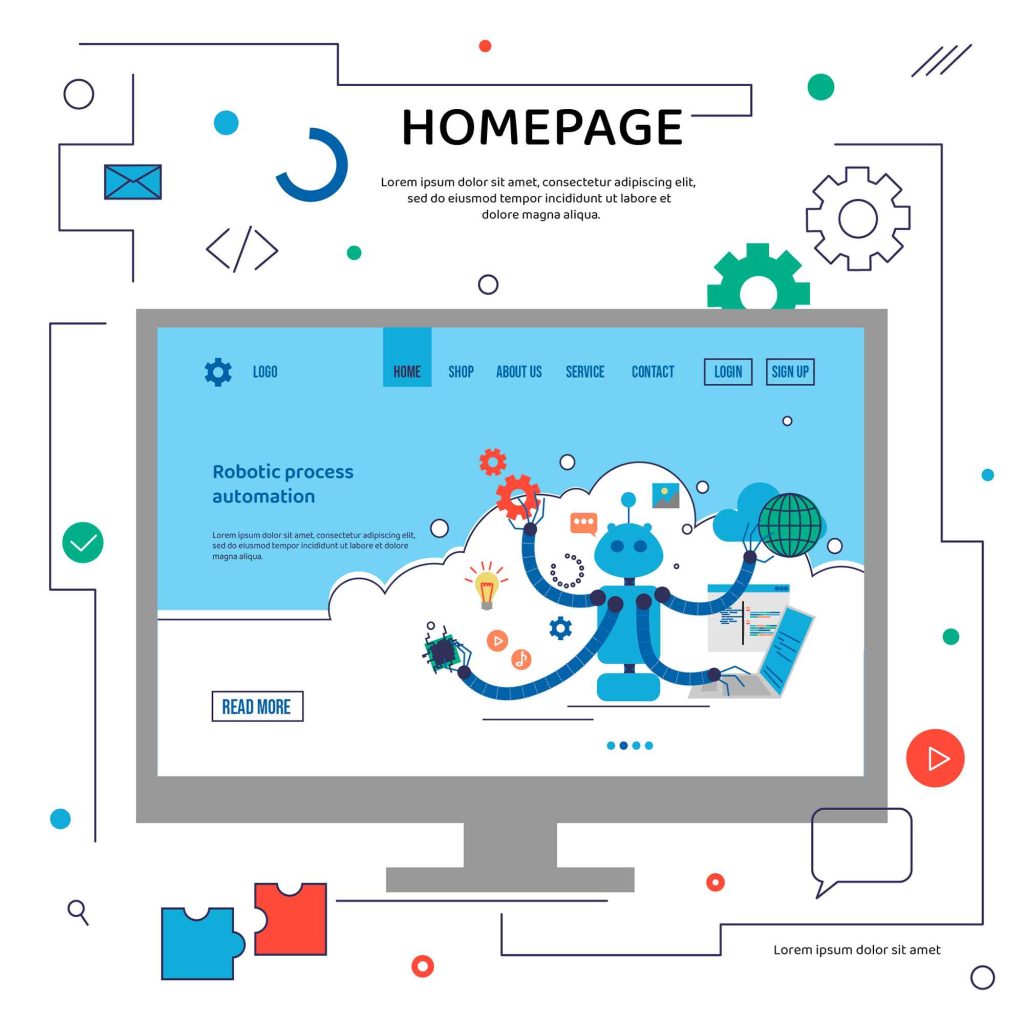Create a Profitable Website: How to Create & Monetize Your Site

Imagine having a 24/7 salesperson who never sleeps, never takes a break, and works tirelessly to bring in customers from every corner of the globe. That’s the magic of a well-built, strategically designed website.
But how do you go beyond having a site and turn it into a profit-generating machine? Whether starting fresh or fine-tuning an existing site, this guide will show you the secrets to transforming your website into a powerful revenue engine.
Ready to discover the goldmine hidden in your online presence? Read on.
Understanding the Website Development Process
Building a profitable website begins with understanding the website development process. Whether starting from scratch or revamping an existing site, following these website development steps will ensure a smooth and successful launch.
Define Your Goals and Audience
Before you dive into designing your website, defining what you want to achieve is crucial. Are you looking to create a website to earn money through an e-commerce store, blog, or membership site?
Understanding your goals will help you tailor the site to meet your needs. Additionally, identify your target audience; knowing who you’re building the site for will guide your design and content choices.
Choose a Platform
Selecting the right platform is a critical decision in the website development process. If you plan to create an e-commerce website, platforms like Shopify offer user-friendly interfaces and robust features.
You can make an e-commerce website on Shopify without extensive technical knowledge, thanks to its drag-and-drop builder and various customizable templates.
Design Your Site
Design is where creativity meets functionality. Whether you opt for a light or dark mode, your design should reflect your brand and cater to your audience. When creating your site, focus on the following:
Develop Your Site
After designing, it’s time to bring your vision to life. This stage involves coding and configuring your site. If you’re not a developer, consider hiring a website development freelancer who can build a site tailored to your specifications.
Launch and Test
Once your site is developed, it’s crucial to conduct thorough testing. Ensure all links work, forms are functional, and the site performs well on various devices.
Before going live, gather feedback from users and make any necessary adjustments.

Monetizing Your Website: Proven Strategies
With your site live and running, the next step is implementing strategies to make money on your website. Here are some effective methods to consider:
E-commerce Integration
One of the most direct ways to monetize your website is by selling products or services online. If you have physical or digital products to sell, setting up an e-commerce store is a must.
Shopify, for instance, is a popular choice for those looking to make a website on Shopify. It offers everything from product management to secure payment processing, making it easier for you to start earning.
Affiliate Marketing
Affiliate marketing is a great alternative if you don’t have your own products to sell. Promoting other companies’ products and earning a commission on sales can generate income with minimal investment. This method is particularly effective for blogs and content-focused websites.
Advertising Revenue
Advertising is another powerful way to monetize your website. You can use platforms like Google AdSense to display ads on your site and earn revenue based on clicks or impressions. This method works well for sites with high traffic.
Membership Sites
If you provide valuable content, consider creating a membership site where users pay for access to premium content, courses, or community features. This model can provide a steady stream of income if executed well.
Offer Website Development Services
If you have expertise in website development, you can offer website development services as a freelancer or through your company.
This includes creating business websites to offering development packages catering to different client needs. Don’t forget to showcase your skills with a well-crafted website development resume and website development portfolio.
Crafting a Winning Web Development Proposal
When offering website development services, your ability to secure clients often hinges on your proposal. A website development proposal should clearly outline your services, timelines, costs, and deliverables. Here’s how to craft one:
A well-structured proposal can make a strong impression and increase your chances of winning a contract.
Building & Following a Web Development Roadmap
A website development roadmap is a strategic plan that outlines the steps you’ll take to complete your website.
This roadmap guides you and your clients, ensuring everyone is on the same page throughout the project. Here’s how to create one:
A well-defined roadmap can lead to a smoother development process and a successful project outcome.
Reviewing & Reporting on Web Development Progress
Once your website is up and running, monitoring its performance and making improvements where necessary is essential.
This involves creating a website development report that tracks key metrics and provides insights into what’s working and what’s not. Here’s what to include:
Regular reporting will help you keep your website running smoothly and ensure it continues to meet your business goals.
Conclusion
Creating and monetizing a website is a multifaceted process that requires careful planning, execution, and ongoing optimization. Whether you’re a beginner just starting or an expert looking to refine your skills, following the steps outlined in this guide will help you build a successful, profitable website.
Remember, the key to long-term success lies in continually monitoring your site’s performance and adapting to changes in the digital landscape.
Are you ready to take your website to the next level? Whether you need help with design, development, or monetization, our team is here to support you every step of the way. Contact us today to learn more about our comprehensive website development services.



